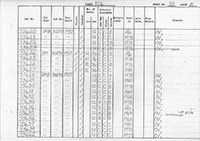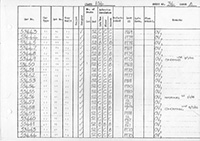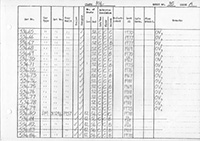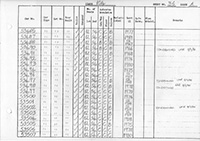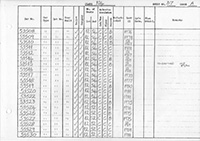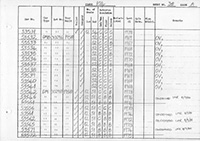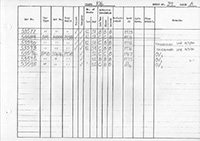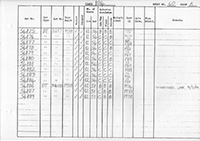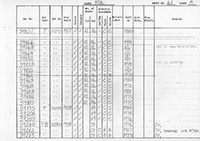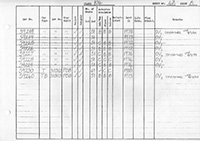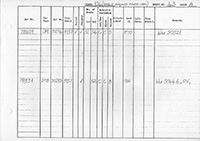Class 104 BRC&W 2, 3 & 4-car DMUs
Modifications
Over the life of the vehicles were were a number of modifications done, some were pretty standard on all DMUs (such as the removal of the route indicator) other were peculiar to the class.
None of the class were refurbished.
Bogies
Some bogies were being modified to improve the ride. Ten three-car Newton Heath sets were treated (consecutively numbered 50470-9/59178-87/50522-31, the last built of the LMR 3-car sets) circa 1969.
The image shows a modified bogie under 53474 (taken in 1983). The swing links (and mounting bracket) are gone, there is an extra isosceles trapezium shaped plate added to the lower edge of the centre of the bogie frame, and the bolster beam suspension has been altered.
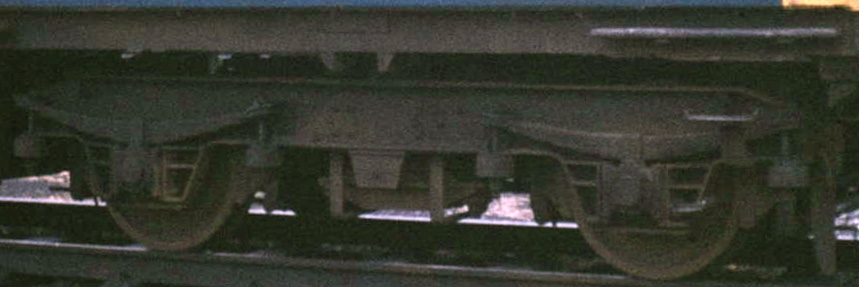

The sets were reserved for Manchester - Blackpool services which involved high speed running over a portion of the WCML, and in 1970 they began to be identified by a white stripe along the bodysides.
The image shows 'Blackpool white stripers' M50529 and M50528 on Longsight depot in July 1970. Mel Smith.
In December 1971 a further three sets were modified, formed from 50443/52/60/93, 50504/12 and 59149/60/8. This was noted as "friction controls springs removed" but believed to be the same modification.[1]
Downgrading of accomodation
Some DMC(L) and TC(L) vehicles were declassified to DMS(L) and TS(L).
Route Indicator
All driving vehicles were built with a two-character reporting number headcode box, fitted below the centre windscreen. The letter in the first position indicated the classification of the train, the number in the second position indicated the local route coding.
These were taken out of use in the mid-1970s and they would often be seen with the blinds wound to a white part. Some hac the glass painted over in yellow, other had a 'domino' display of a black background with two white dots. Subsequent removal of these headcode boxes followed and the holes were plated over.
Asbestos Removal

During overhaul in the early 1980s some vehicles had their blue asbestos removed and fibre glass insulation fitted. Often the vehicles which had this done would also have the roof vents removed and the holes plated over.
The image shows a Class 104 formation (53442 closet) the first four vehicles having the roof vents removed. Stuart Mackay Collection.
The pages below are from a vehicle log kept by the RTC at Derby dated circa 1984 which included the asbestos status for each vehicle.
The codes for the asbestos columns are: B - blue asbestos; C - removed. In the remarks column OV means open van (no cage).
Window Bars

In the 1970s Newcastle sets would have three bars fitted over the droplights on the passenger doors. This allowed them to put their arms out to reach the door handle but not put their heads out.
The image shows window bar fitted and recently painted E50574 at Whitby on the 30th August 1980. Jerry Glover.
In 1986 at least nine Newton Heath sets were fitted with window bars for use through Holme Tunnel.
References
- ⋏ p113 March 1972 Railway Observer (Railway Correspondence and Travel Society)
Summary
Ordering Details
Description
Interiors
Modifications
Single Engine Conversion
2-car diagrams & Works Pics
3-car diagrams & Works Pics
4-car diagrams & Works Pics
Numbering & Drivers Instructions
Liveries
Operations - Early Days
Operations - Later Days
Operations - Scotland
Accidents
Decline
Non-Passenger Use
Images
Details about preserved Class 104s can be found here.
Many thanks to Kevin Dowd for his assistance in the preparation of these pages, and to Eddie Knorn for further data.



